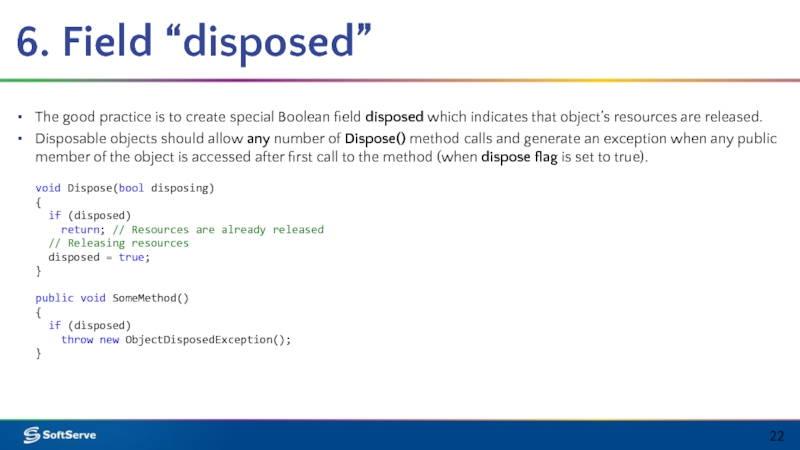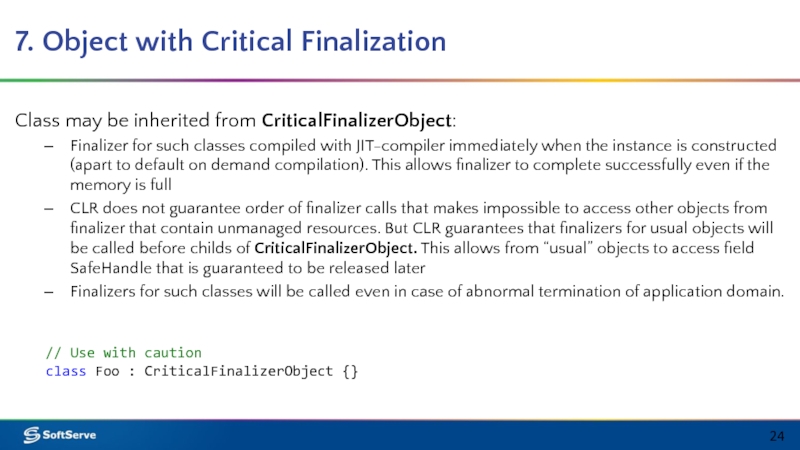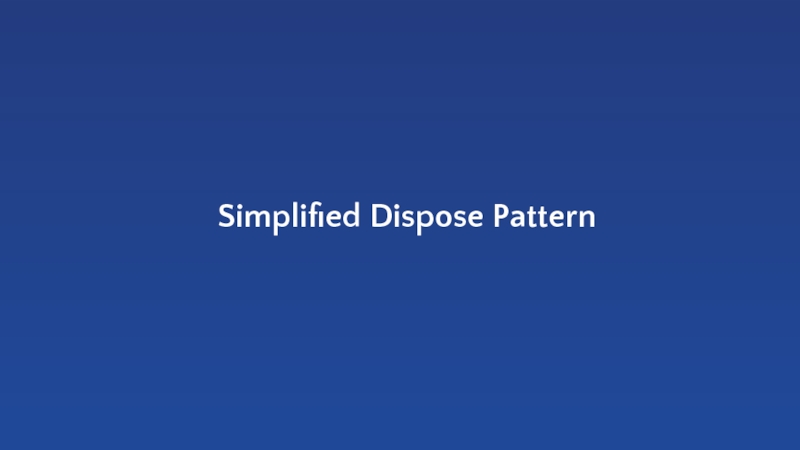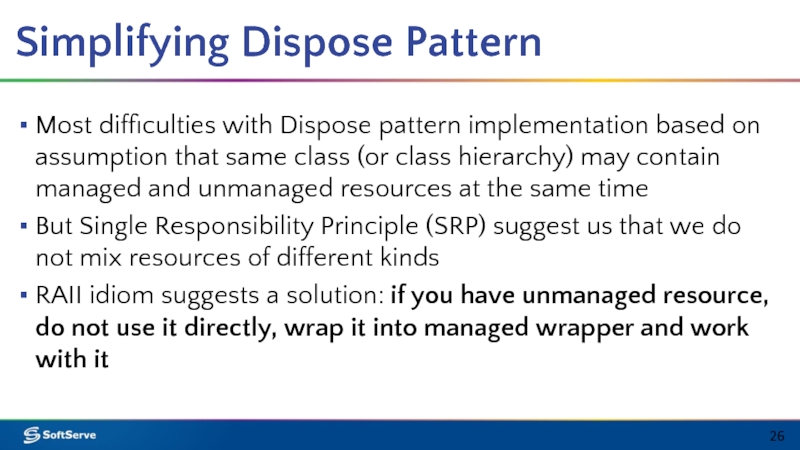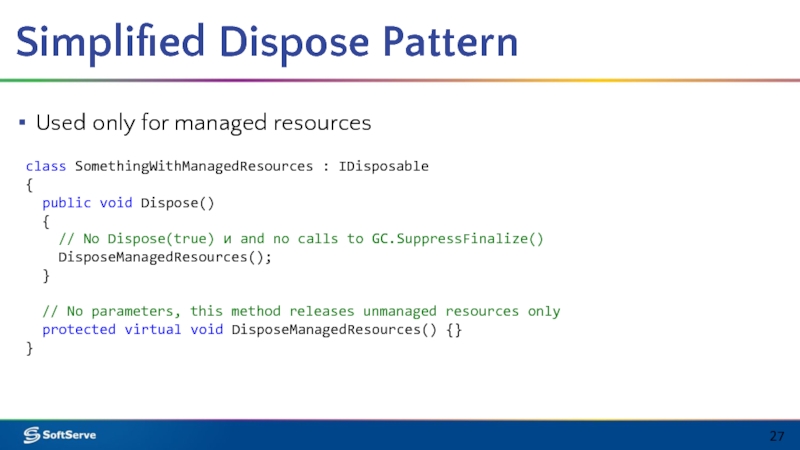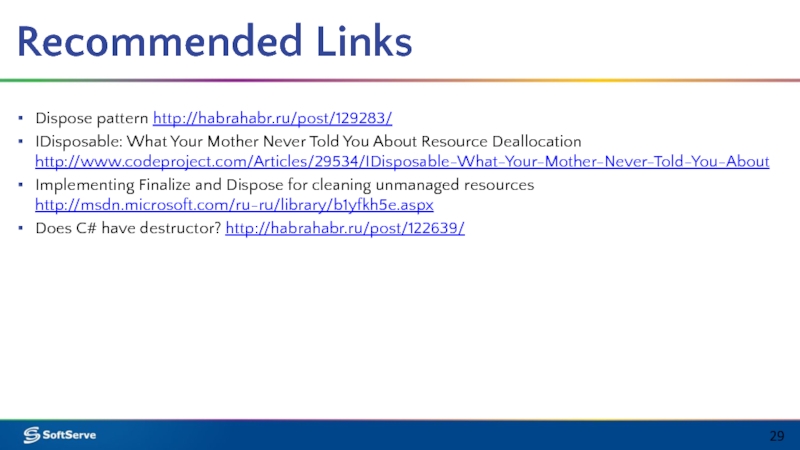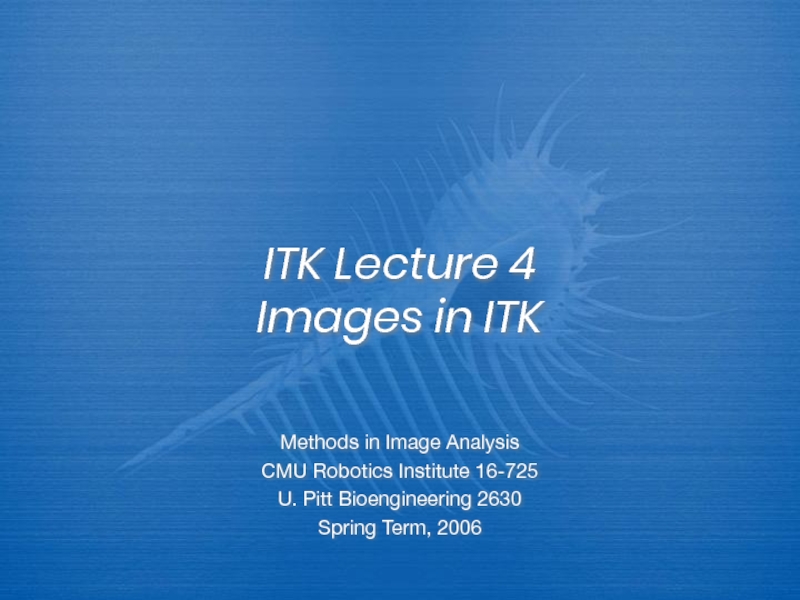- Главная
- Разное
- Дизайн
- Бизнес и предпринимательство
- Аналитика
- Образование
- Развлечения
- Красота и здоровье
- Финансы
- Государство
- Путешествия
- Спорт
- Недвижимость
- Армия
- Графика
- Культурология
- Еда и кулинария
- Лингвистика
- Английский язык
- Астрономия
- Алгебра
- Биология
- География
- Детские презентации
- Информатика
- История
- Литература
- Маркетинг
- Математика
- Медицина
- Менеджмент
- Музыка
- МХК
- Немецкий язык
- ОБЖ
- Обществознание
- Окружающий мир
- Педагогика
- Русский язык
- Технология
- Физика
- Философия
- Химия
- Шаблоны, картинки для презентаций
- Экология
- Экономика
- Юриспруденция
Dispose Pattern in C# презентация
Содержание
- 1. Dispose Pattern in C#
- 2. Agenda Destructor and Finalizer in C# IDisposable
- 3. Destructor and Finalizer in C#
- 4. Destructor in C# Destructor in C# language
- 5. Finalizer Problem Time of finalizer call is
- 6. IDisposable and RAII
- 7. Interface IDisposable Provides a mechanism for releasing unmanaged resources.
- 8. RAII Idiom RAII – Resource Acquisition Is
- 9. Keyword using Keyword “using” not completely implements
- 10. Method Dispose Dispose method differs from destructor
- 11. Dispose Pattern for Managed and Unmanaged Resources
- 12. Dispose Pattern Taking into account all previously
- 13. Managed and Unmanaged Resources Unmanaged resources –
- 14. Sample Resource Wrapper class NativeResourceWrapper : IDisposable
- 15. Main Idea of Dispose Pattern The main
- 16. 1. Interface Implementation Class that has both
- 17. 2. Method Dispose(bool disposing) Class contains method
- 18. 3. Method Dispose() Dispose method implementation: first
- 19. Notes to GC.SupressFinalize() Call GC.SuppressFinalize() should be
- 20. 4. Parameter “disposing” Method Dispose(bool disposing) has two parts:
- 21. 5. Finalizer [OPTIONAL] Class may have finalizer
- 22. 6. Field “disposed” The good practice is
- 23. Objects with Critical Finalization
- 24. 7. Object with Critical Finalization Class may
- 25. Simplified Dispose Pattern
- 26. Simplifying Dispose Pattern Most difficulties with Dispose
- 27. Simplified Dispose Pattern Used only for managed
- 28. Recommended Links
- 29. Recommended Links Dispose pattern http://habrahabr.ru/post/129283/ IDisposable: What
Слайд 2Agenda
Destructor and Finalizer in C#
IDisposable and RAII
Dispose Pattern for Managed and
Objects with Critical Finalization
Simplified Dispose Pattern
Recommended Links
Слайд 4Destructor in C#
Destructor in C# language created with tilde (“~”) is
That is why it is correct to say that destructor and finalizer is the same in C#
While “destructor” term has special meaning in programming, it is better to say that C# does not have destructor at all, we will use term “finalizer” instead
Слайд 5Finalizer Problem
Time of finalizer call is not defined in .NET, that
Time of resource release
Fact of resource release
Слайд 8RAII Idiom
RAII – Resource Acquisition Is Initialization
RAII means that resource should
OO languages with direct resource management completely corresponds to RAII
Слайд 9Keyword using
Keyword “using” not completely implements RAII
// Opening file inside using
// What if file opens ouside using block? FileStream file2 = File.OpenRead("foo.txt");
Слайд 10Method Dispose
Dispose method differs from destructor in that way that it
Danger Consequences of dispose call: object is not destroyed but resource is not available and any further method call or access to property is potentially dangerous
Слайд 12Dispose Pattern
Taking into account all previously mentioned, we have to implement
Слайд 13Managed and Unmanaged Resources
Unmanaged resources – IntPtr, socket descriptors, any OS
If unmanaged resource is wrapped into class with RAII it becomes managed resource
Any of two types of resources implies different approaches to work with them
Слайд 14Sample Resource Wrapper
class NativeResourceWrapper : IDisposable
{
// IntPtr – unmanaged resource descriptor
private
Слайд 15Main Idea of Dispose Pattern
The main idea of Dispose Pattern is:
Place all logic of resource release into separate method;
Call it from Dispose method;
Also call it from finalizer;
Add special flag that helps to distinguish who exactly (Dispose or Finalizer) called the method.
Слайд 161. Interface Implementation
Class that has both managed and unmanaged resources implements
class Boo : IDisposable { ... }
Слайд 172. Method Dispose(bool disposing)
Class contains method Dispose(bool disposing) that does all
disposing parameter tells if method is called from Dispose method or from Finalize. This method should be protected virtual for non-sealed classes and private for sealed classes
// For not-sealed classes
protected virtual void Dispose(bool disposing) {}
// For sealed classes
private void Dispose(bool disposing) {}
Слайд 183. Method Dispose()
Dispose method implementation: first we call Dispose(true), then we
public void Dispose()
{
Dispose(true /*called by user directly*/);
GC.SuppressFinalize(this);
}
Слайд 19Notes to GC.SupressFinalize() Call
GC.SuppressFinalize() should be called after Dispose(true) but not
GC.SuppressFinalize() should be called for classes that do not have finalizers because finalizers may be created for child classes. The only exception is sealed classes.
Слайд 204. Parameter “disposing”
Method Dispose(bool disposing) has two parts:
If this method called from Dispose (disposing parameter
If this method is called from finalizer (that is possible under normal circumstances only during garbage collection process when disposing parameter is false), we release only unmanaged resources.
void Dispose(bool disposing)
{
if (disposing)
{
// Releasing managed resources only
}
// Releasing unmanaged resources
}
Слайд 215. Finalizer
[OPTIONAL] Class may have finalizer and call Dispose(bool disposing) from it
Also we should take into account that finalizer may be called even for partially constructed classes, if constructor for such class raises an exception. That is why resource releasing code should handle situation when resources are not allocated yet
~Boo()
{
Dispose(false /*not called by user directly*/);
}
Слайд 226. Field “disposed”
The good practice is to create special Boolean field
Disposable objects should allow any number of Dispose() method calls and generate an exception when any public member of the object is accessed after first call to the method (when dispose flag is set to true).
void Dispose(bool disposing)
{
if (disposed)
return; // Resources are already released
// Releasing resources
disposed = true;
}
public void SomeMethod()
{
if (disposed)
throw new ObjectDisposedException();
}
Слайд 247. Object with Critical Finalization
Class may be inherited from CriticalFinalizerObject:
Finalizer for
CLR does not guarantee order of finalizer calls that makes impossible to access other objects from finalizer that contain unmanaged resources. But CLR guarantees that finalizers for usual objects will be called before childs of CriticalFinalizerObject. This allows from “usual” objects to access field SafeHandle that is guaranteed to be released later
Finalizers for such classes will be called even in case of abnormal termination of application domain.
// Use with caution
class Foo : CriticalFinalizerObject {}
Слайд 26Simplifying Dispose Pattern
Most difficulties with Dispose pattern implementation based on assumption
But Single Responsibility Principle (SRP) suggest us that we do not mix resources of different kinds
RAII idiom suggests a solution: if you have unmanaged resource, do not use it directly, wrap it into managed wrapper and work with it
Слайд 27Simplified Dispose Pattern
Used only for managed resources
class SomethingWithManagedResources : IDisposable
{
public void
Слайд 29Recommended Links
Dispose pattern http://habrahabr.ru/post/129283/
IDisposable: What Your Mother Never Told You About
Implementing Finalize and Dispose for cleaning unmanaged resources http://msdn.microsoft.com/ru-ru/library/b1yfkh5e.aspx
Does C# have destructor? http://habrahabr.ru/post/122639/
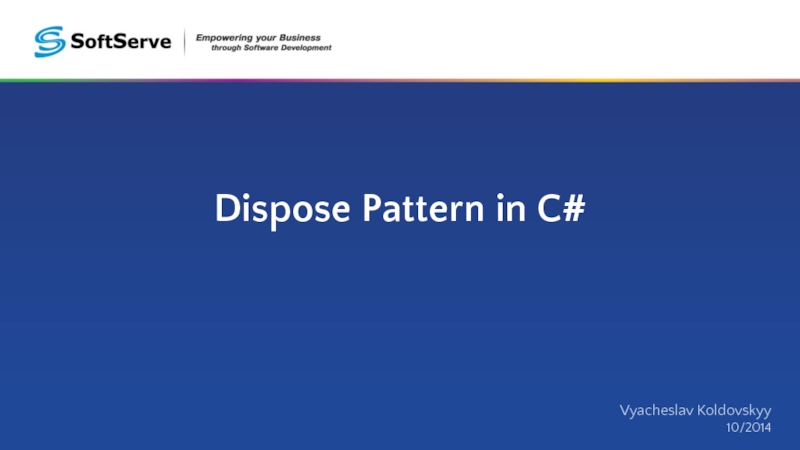
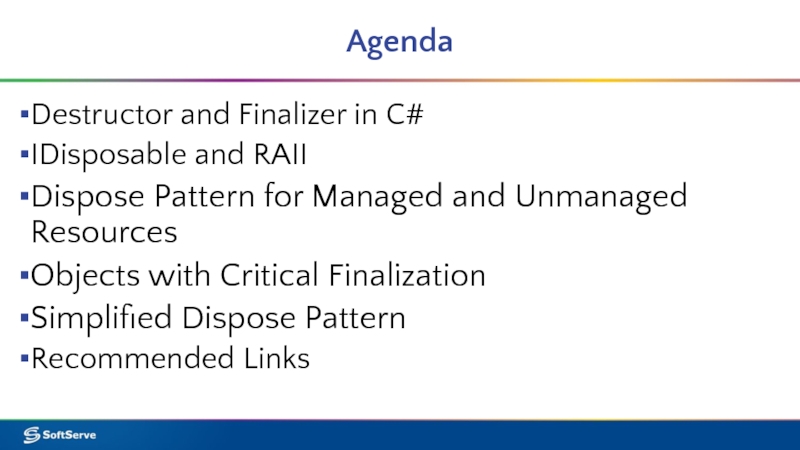
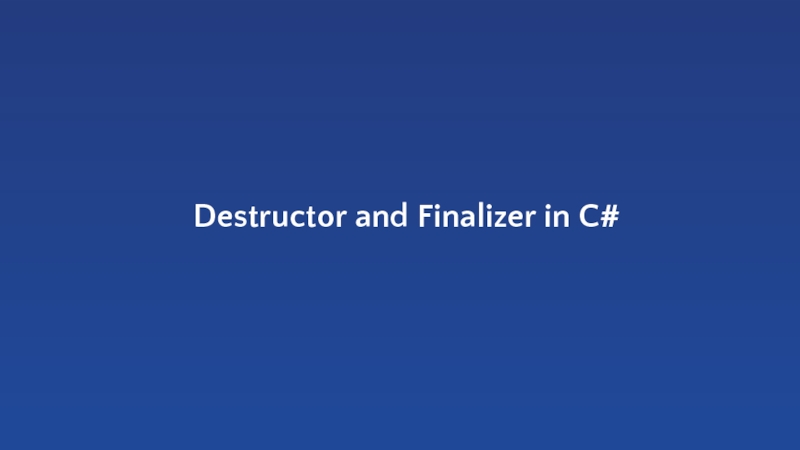
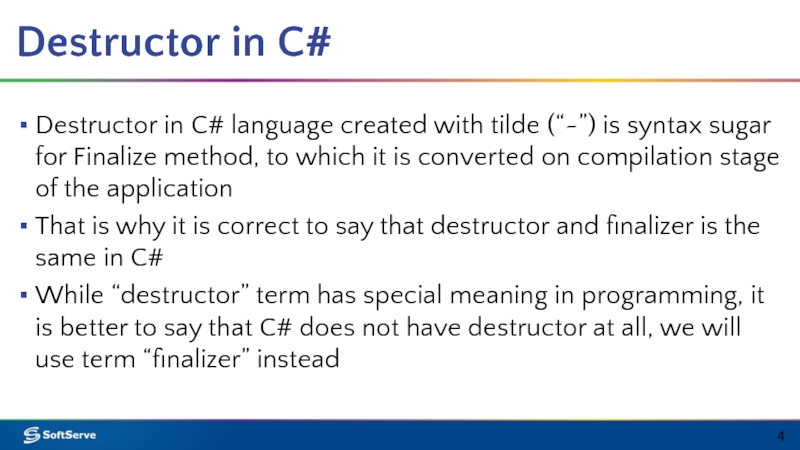

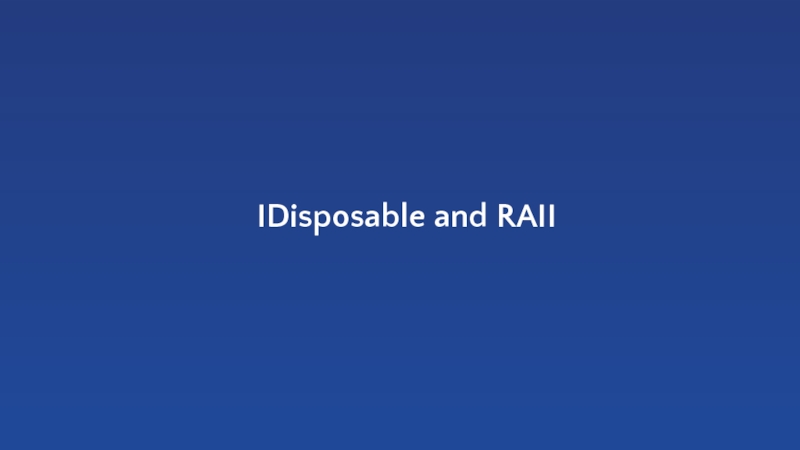
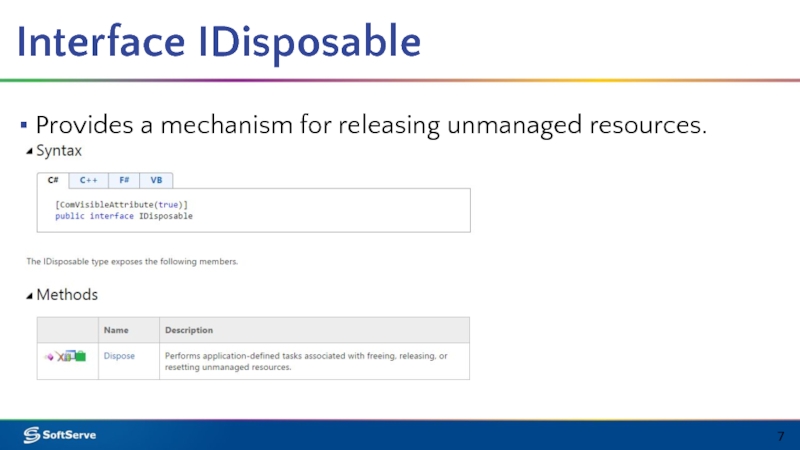
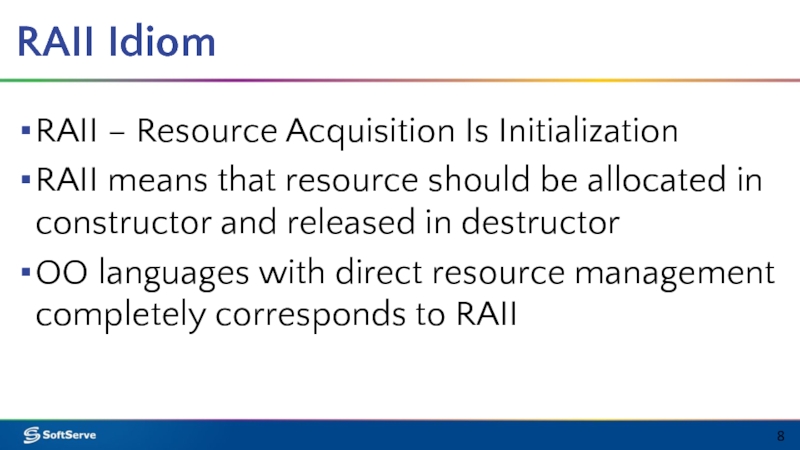
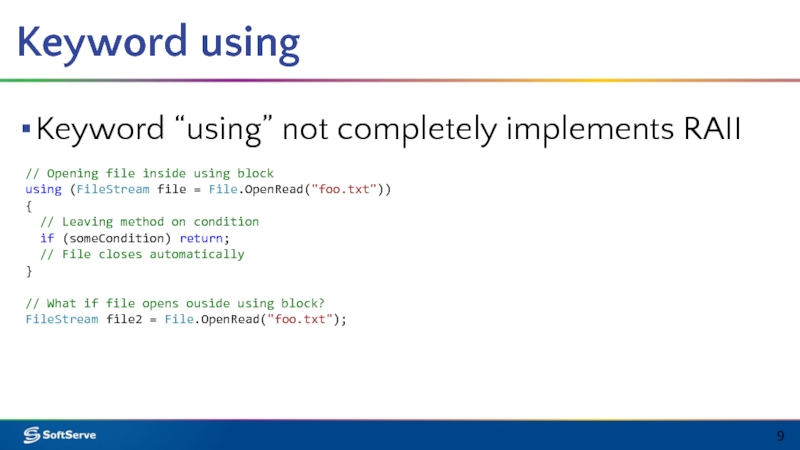

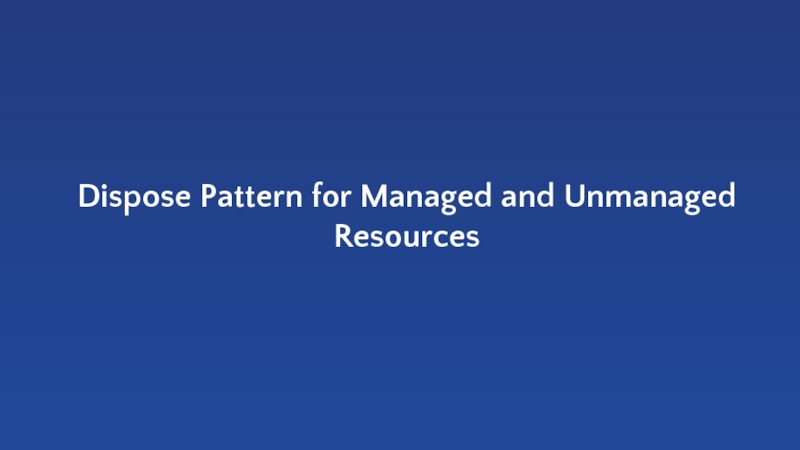



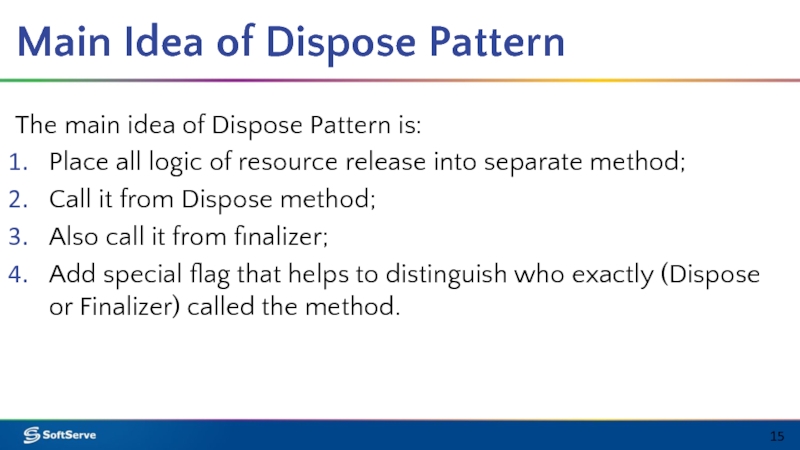
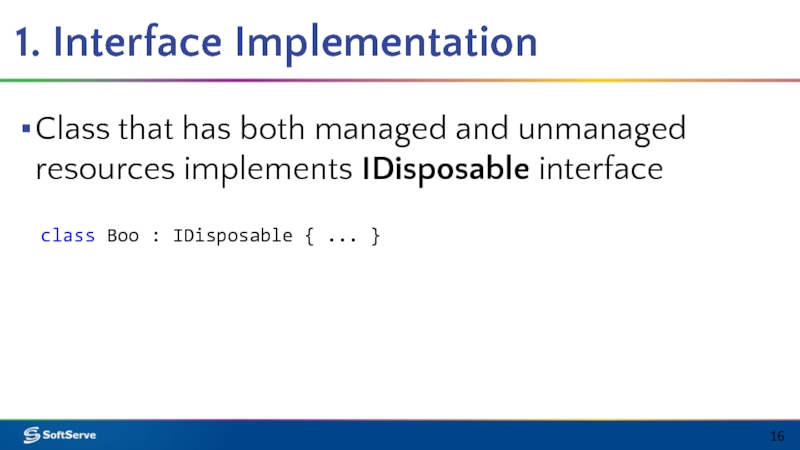
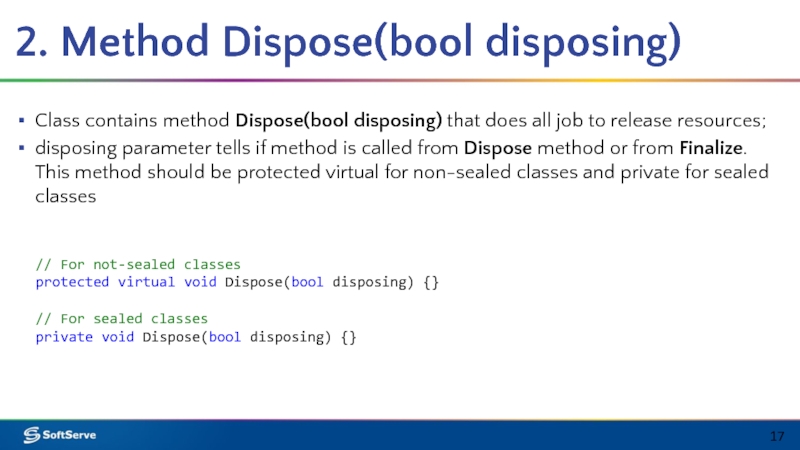
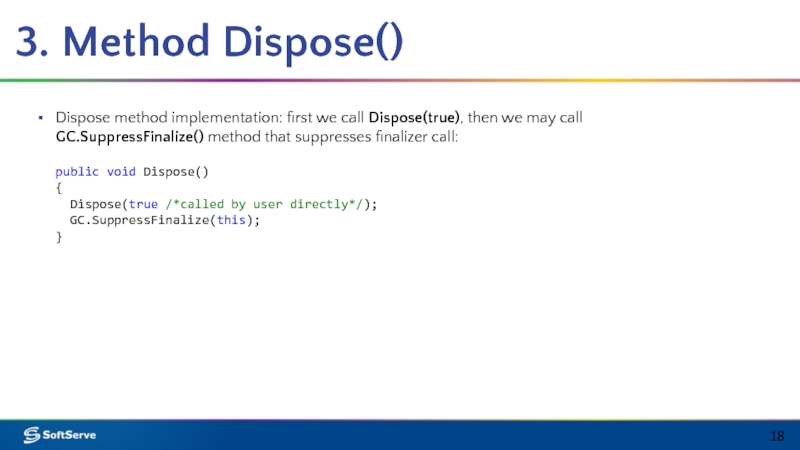
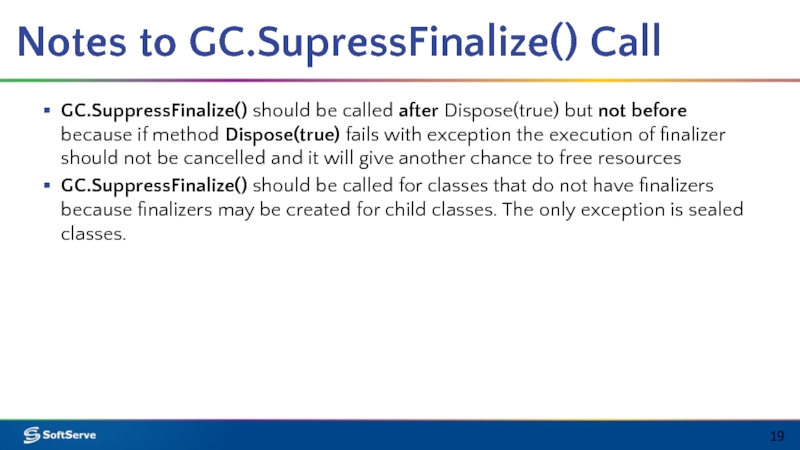
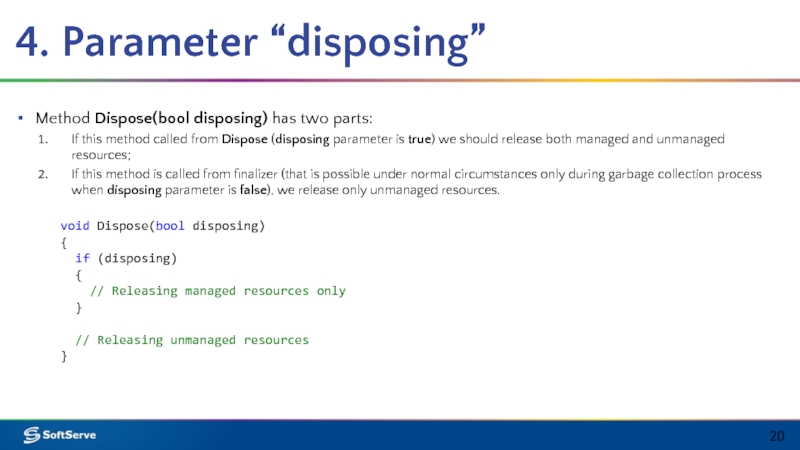
![5. Finalizer[OPTIONAL] Class may have finalizer and call Dispose(bool disposing) from it passing false as parameter. Also we should](/img/tmb/5/475774/0b989c594e744262377dfd8e9338a35c-800x.jpg)
